101 Inventions That Changed the World: Amazing Science Discovery
- January 14, 2023
An invention is a unique or original tool, technique, composition, notion, or procedure. It may improve a device, item, or method through creation to boost productivity or cut costs. It might even be a brand-new idea. Innovation can be patented if it is sufficiently original, either as a standalone creation or as a material advancement over previous works. While there are many amazing inventions to talk about, today we will talk about 101 inventions that changed the world. When a patent is approved, the inventor receives a limited-time exclusive interest in the invention that it can license for monetary gain. There are a lot of innovations that changed the world significantly.
How Have Inventions Changed Our Life?
Inventions amazingly changed our lives. The results of creativity and original thought are inventions. We wouldn’t have advancement on our planet without these. If there were no spoken or written languages, mathematics, or anything else that puts man above other animals on Earth, you would be eating with your bare hands, walking everywhere, and riding horses bareback.Your communications would only be as far as your voice could carry. Nothing exists beyond what nature supplies without creation.
What Is The Importance of Inventions In Human Life?
The economy depends on invention, despite the myth that needs are the mother of invention. The world is changed, and issues are solved, which is why dreams are so important. Innovation transcends culture and influences how people live their lives. The modern era is the most innovative period in world history. Yet, it was only possible with the development of electricity that was available whenever needed. Human history’s most tremendous change and population growth began with that single development.
How Have Inventions Made Our World Smaller?
In many ways and realms, technology has made the world smaller. Consider the past and recall when party lines and switchboard operators were the norms; in contrast, we now have access to practically instantaneous communication with anybody on the planet.

It has always been the purpose of information and communication technology to bring people closer together.
The Internet has most likely played a significant role in how much smaller the world is thanks to technology. When you consider how accessible the Internet or World Wide Web has made formerly remote locations, it makes the Internet or World Wide Web look unsettling and even “witchcraft” to the layperson. You can gaze at just about any spot on the planet using internet tools like Google Earth.
Type in an address or the name of a town to instantaneously view a satellite image of that location. Zoom in to start recognizing the streets and homes. Although the technology doesn’t take you there, you nevertheless feel like you are there when you see it with your own eyes.
Read more : BIM for Cost Estimation: Guidelines and Tips
101 Inventions That Changed The World:
The development of electricity is only one example of how inventions have fundamentally altered our way of life. Dishwashers and lint rollers, for example, only make life more convenient. The telephone, the bicycle, and plastic were some of the most influential technologies of the nineteenth century that altered how we lived. However, the list goes on. Here are 101 Inventions that changed the world.
101 Inventions That Changed the World are Mentioned Below:
1. Steam engine:
Steam is the working fluid of a steam engine. A heat engine is used to do mechanical labor. To move a steam engine requires the force generated by steam pressure. A connecting rod and crank can convert this pushing force into rotational energy that can use to produce work. Typically, only reciprocating engines, such as the one just mentioned, are referred to as “steam engines,” not steam turbines. There is a separation between the working fluid and the combustion products in external combustion engines, such as steam engines.
2. Wheel:
A round component designed to rotate on an axle bearing. The wheel and axles are the essential parts of the six simple machines. Wheels and axles work together to make it simple to transport and move large objects, whether carrying a load or working on machinery.
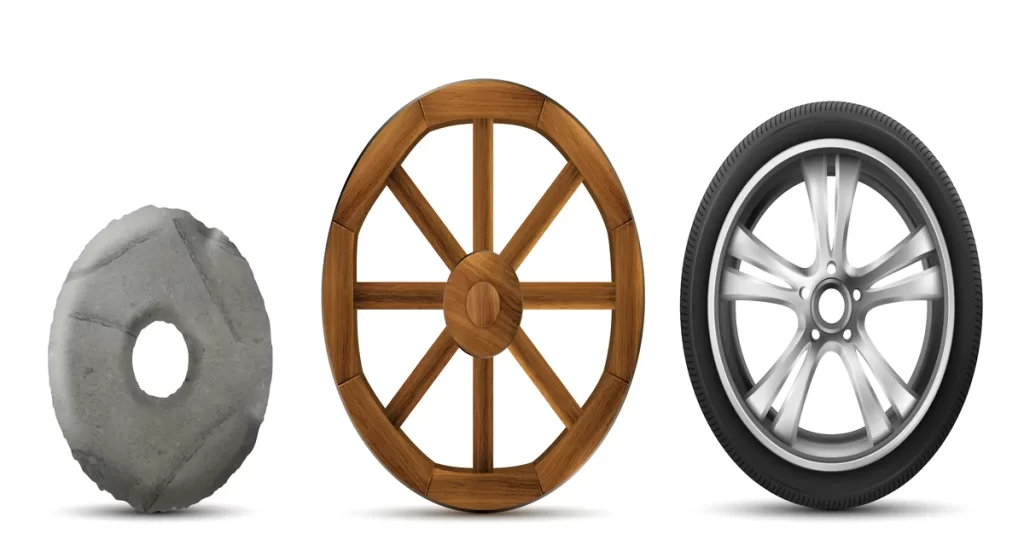
As a ship’s wheel, steering wheel, potter’s wheel, and flywheel are examples, wheels are also employed for other reasons.
3. Paper:
Paper is a thin sheet material created by mechanically or chemically processing cellulose fibers from wood, rags, grasses, or other vegetable sources in water. The water is drained through the fine mesh, leaving the fibers distributed on the surface, and the material is pressed and dried. Although paper was once created in single sheets by hand, practically all piece is now made using massive machines, some of which produce reels up to 10 meters wide and up to 600,000 tons of paper annually.
4. Pen:
Writing or drawing on a surface, usually paper, is done with an essential writing instrument called a pen. Early cells, such as reed pens, quill pens, dip pens, and ruling pens, had a small amount of ink periodically refilled by dipping the pen’s tip into an inkwell.

This ink was held on the nib or in a small cavity or void. Only a few specialized disciplines, including calligraphy and drawing, still use these pens today.
5. Radio:
An extended period was spent on the theoretical foundations for radio communication, the discovery and experimental study of radio waves, and the engineering and technological advancements associated with their transmission and detection. Due to these advancements, Guglielmo Marconi created a wireless communication system using radio waves.
6. Television:
T.V. is a common abbreviation for television, a communication method for sending moving pictures and sound. The phrase can describe a television set, and the transmission method for T.V. Television is popular for news, sports, entertainment, and advertising.
7. Computer:
A computer is a digital electrical device configured to perform mathematical or logical operations automatically. Computers today can run programs, which are generalized sets of processes. Many different jobs can be carried out by computers thanks to these programs.

The hardware, operating system (primary software), and any additional peripheral devices required and utilized for “full” functioning make up a computer system, which is a “complete” computer. The phrase “computer network” or “computer cluster” may also describe a collection of connected computers that work as a unit. This is not all for 101 inventions that changed the world, here comes more.
8. DVD player:
From black and white to VHS to Blu-ray today, the entertainment industry has come a long way, and who knows what the future of technology may bring? In 1994, Toshiba once more created a DVD player prototype. The prototype was dubbed Fire Tower, a complex but somewhat disorganized stack of circuit boards. The second version, called Vanguard, was considerably cleaner. Despite its neatness, the prototype demonstrated that DVDs’ audio and video quality were superior to VHS. The first feature film was released on DVD in 1997, just one year after it went on sale.
9. Printer:
The laser printer we use today is a consequence of ongoing invention by numerous organizations, much like many other computer-related technologies and accessories. Between 1969 and 1971, Xerox PARC (Palo Alto Research Center) produced the first laser printer. Just six years later, Xerox introduced the “9700 Electronic Printing System,” building on the research to create a new product. It included everything a printer could offer, including character generation, page formatting, and laser scanning.
10. Watch:
A watch is a small, wearable clock that may be carried around. It is made to maintain a constant motion despite any motions brought on by the person’s activities. A wristwatch is made to fit snugly around the wrist and be fastened by a watch strap or other bracelets, such as one made of metal, leather, or another material. A pocket watch is made to fit in a person’s pocket and is frequently chained to something.
11. Electricity:
Electricity is a group of physical phenomena connected to the existence and movement of matter that possesses an electric charge. Following Maxwell’s equations, magnetism and electricity are both components of the phenomena known as electromagnetism.
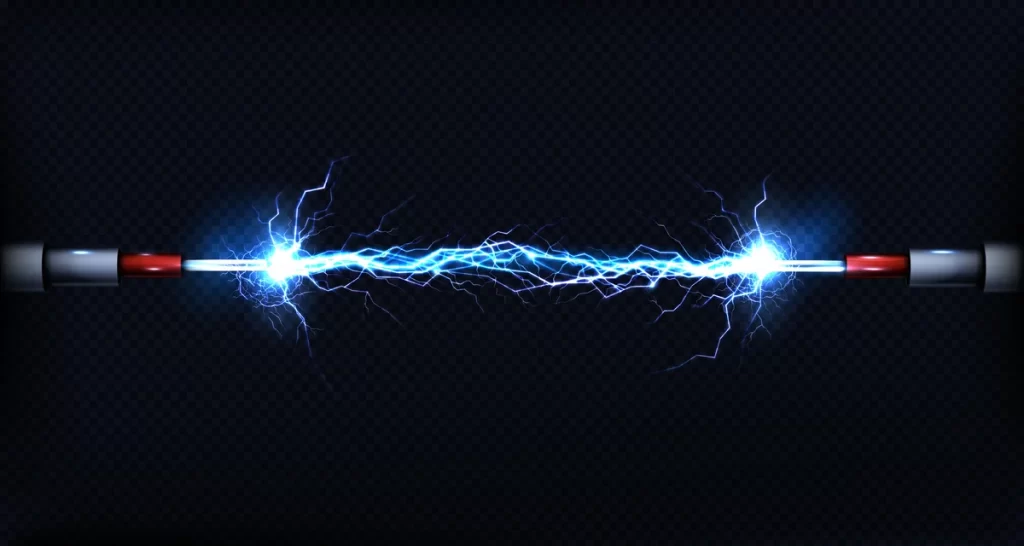
Electricity is a factor in many everyday occurrences, including lightning, static electricity, electric heating, electric discharges, and many others. An electric field is created when a charge is present, which could be positive or negative. Electric current, which also creates a magnetic field, is created when electric bills flow.
12. Calculator:
An electronic calculator is often a tiny, portable computer that can perform calculations ranging from simple mathematics to advanced arithmetic.
13. Mobile Phone:
Another name for mobile phones is cell telephone, cellphone, smartphone, hand phone, or pocket phone, which enable the user to place and receive calls while traveling around a phone service area. Mobile, cell and telephone are also used to simplify these nouns.
14. Internet:
The 1950s in the U.S.A. were when the Internet started. There were severe tensions between the Northern countries at the height of the Cold War. The U.S. realized it required a communications infrastructure that would be impervious to a nuclear strike by the Soviet Union. At the time, only academic employees and military scientists utilized computers, which were bulky, expensive devices. We will also include some common yet major 101 inventions that changed the world in the coming points.
15. Glue:
The first glue patent was granted in Britain somewhere about 1750 for glue manufactured from fish.
16. Aerosol Spray:
In 1790, the idea of an aerosol was first proposed.
17. Air conditioning:
Air conditioning from Willis Carrier put us in a comfortable environment.
18. Airplane:
Wilbur and Orville Wright created the human-crewed engine airplane and patented it as a “flying machine.” Find more about additional developments in aviation.
19. Bicycle:
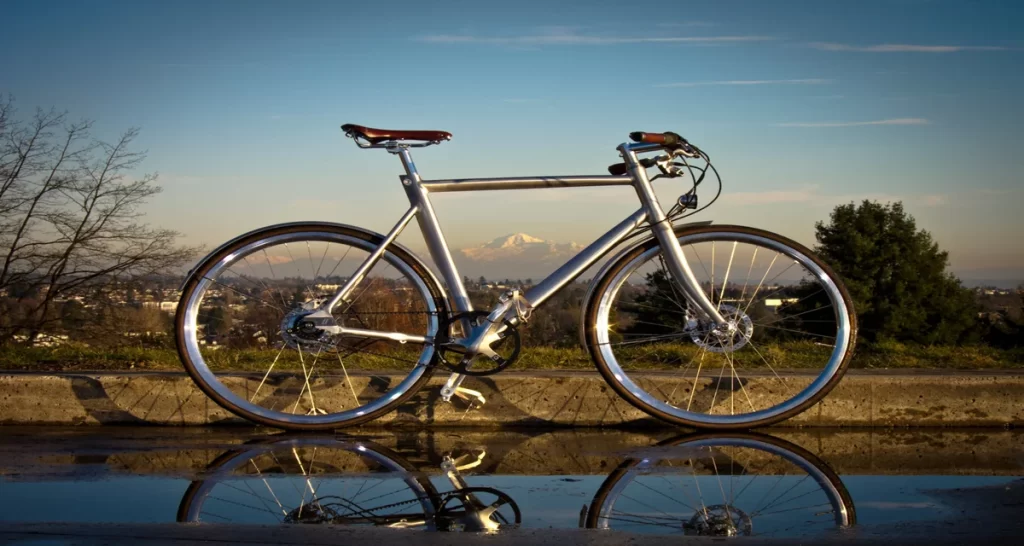
The development of the pedal-powered horse.
20. Blenders:
Stephen Poplawski created the kitchen blender.
21. Asphalt:
The development of roads, their construction, and asphalt.
22. Cars:
Vehicles were invented more than 100 years ago. View timelines, learn about the first gasoline-powered automobile, or discover more about electric vehicles as you discover patents and well-known car types.
23. Eyeglasses:
The development of Salvino D’Armate’s first pair of eyeglasses to the oldest glass lens ever discovered.
24. Hair Dryer:
Since 1890, beginning in France, there has been a forerunner to the hair dryer. Back then, it was known as a blow dryer since you could use it to provide heat to more than simply hair.
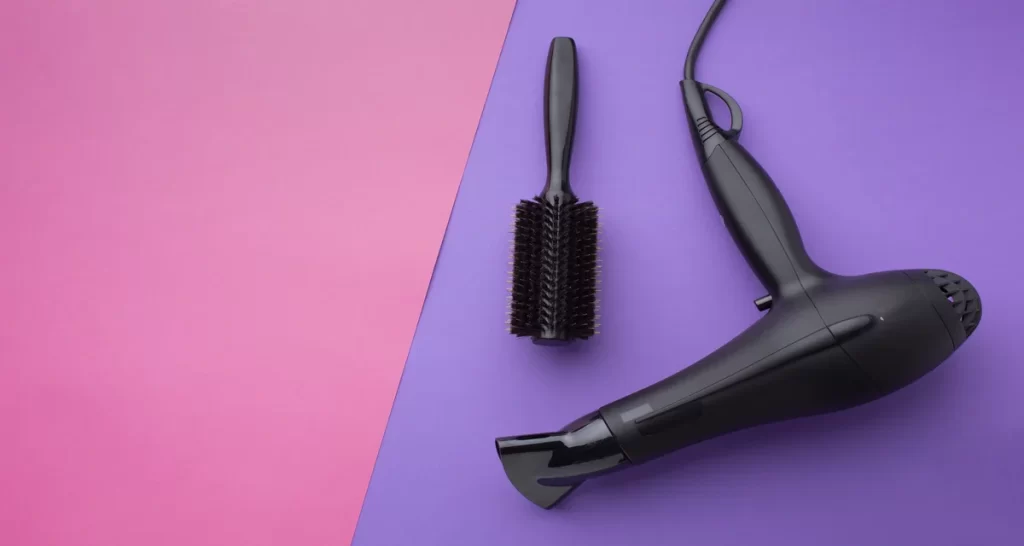
Although numerous similarities and distinctions exist between a blow dryer and a hair dryer, the latter is made with a hairstyle in mind.
25. Scotch tape:
Richard Drew, a 3M engineer who plays the banjo, is credited with patenting Scotch Tape.
26. Scissors:
The background of this innovative invention.
27. Software:
The evolution of different software applications.
28. Steel:
Henry Bessemer developed the first method for cheaply mass-producing steel.
29. Traffic lights:
Near the House of Commons in London, the first traffic lights were placed in 1868. For more information on Garrett Morgan, who holds a manually operated traffic management system patent, visit this article.
30. Water heaters:
Automatic storage water heaters were created in 1889 by Edwin Ruud.
31. Telescope:
A spectacle artisan most likely put together the first telescope. Although the telescope is frequently attributed to the Dutchman Hans Lippershey, it was probably not his idea.
32. Digital camera:
To indicate astronauts’ whereabouts based on pictures of planets and stars they could take while navigating through space, first proposed the filmless camera in 1961.
33. Thermometer:
Thermo scopes are what the earliest thermometers were known as. The original mercury thermometer, or a modern thermometer, was created in 1724 by Gabriel Fahrenheit.
34. Micro oven: While working with vacuum tubes for radar systems, a Raytheon Corporation engineer named Percy LeBaron Spencer unintentionally discovered the cooking power of magnetrons. The melting candy bar in his pocket is thought to have helped him make the breakthrough.
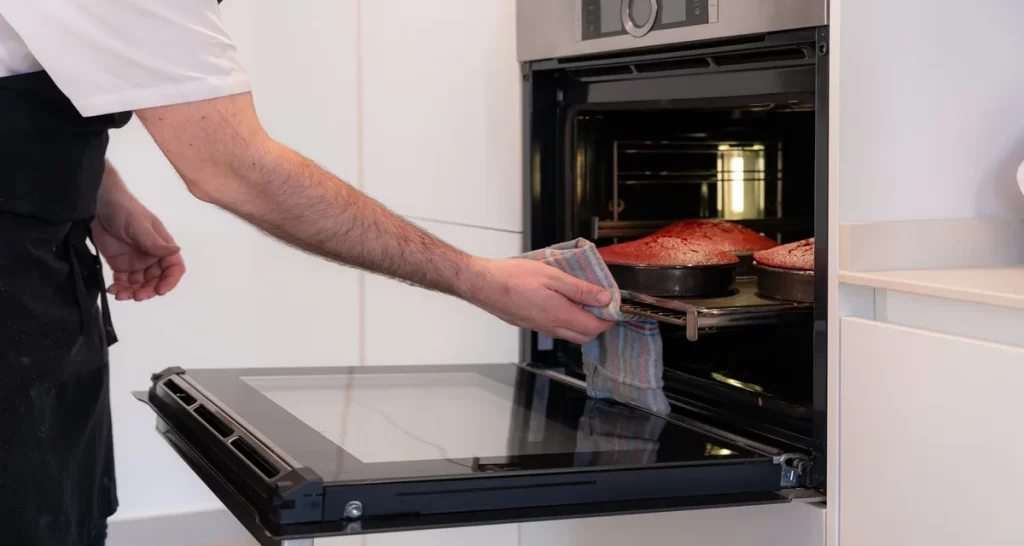
He found he could manufacture popcorn using the magnetron as he conducted further experiments. Speedy Weenie was his nickname for the creation. In 1967, the market saw the release of the first countertop microwave oven.
35. Sewing machine:
One of the best 101 inventions that changes the world is – sewing machines. A portable sewing machine debuted at the 1993 Chicago World’s Fair. The usage of mechanical stitching machines, however, dates back many years. The Featherweight manufactured by Singer Manufacturing Company weighs less than 11 pounds because of its small size and aluminum construction. For 35 years, it was made without interruption. Between 1933 and 1968, they sold at least three million units.
36. Modem:
The name does provide some insight into how it operates: Modulation and demodulation. By integrating the modem into radar systems in 1949, the U.S. Air Force was one of the first to benefit from it. Radar data was transformed into audio and transmitted across phone lines. The noises were changed back into data at the other end. For any other data transmission method, the transmission was still prolonged. The transmission rate was still only 56 kbps, barely enough to open an email, even 40 years after the invention of modem-based radar technology.
37. Washing machine:
The scrub board, the first “machine” for washing clothes, was created in 1797.
38. Weather Instruments:
The background of various weather measuring devices, including their patents.
39. Telegraph:
The telegraph was created by Samuel Morse. the background of telegraphy in general. Telegraph by optical.
40. Artificial heart:
As with many other medical devices, the first artificial heart was implanted into an animal. In 1937, Vladimir Demikhov tried and succeeded in inserting an artificial heart into a dog. Dr. Robert Jarvik is credited with creating the first permanent artificial heart that functioned, albeit implanting one into a human being is another matter. Dr. Willem Kollf operated on Barney Clark in 1982 to install the first artificial heart.
41. Blender:
Contrary to expectations, the inventory is not necessarily linked to the invention. Consider the blender as an example. Despite being created by Stephen Poplawski in 1922, the contemporary electric kitchen appliance is most frequently credited to Fred Waring.
42. Wi-Fi Router:
ALOHAnet connected the Hawaiian island using the UHF packet network. It was most likely the first Wi-Fi architecture to be put to use. In 1997, the 802.11 protocol initially appeared on the scene. More than 9,000 products, including phones, T.V.s, laptops, and even wristwatches, are equipped with Wi-Fi today.
43. Microphone:
Although the microphone was created in the 19th century for use in the telephone, no one ever considered using it to make singers seem louder and more distinct. Mics began to be used in nightclubs and recording studios around the start of the 1920s, moving from phones.
44. Electric cattle:
Utilizing a kettle-shaped vessel is a familiar idea. It has been around longer and is among the earliest Mesopotamian kettles ever discovered.
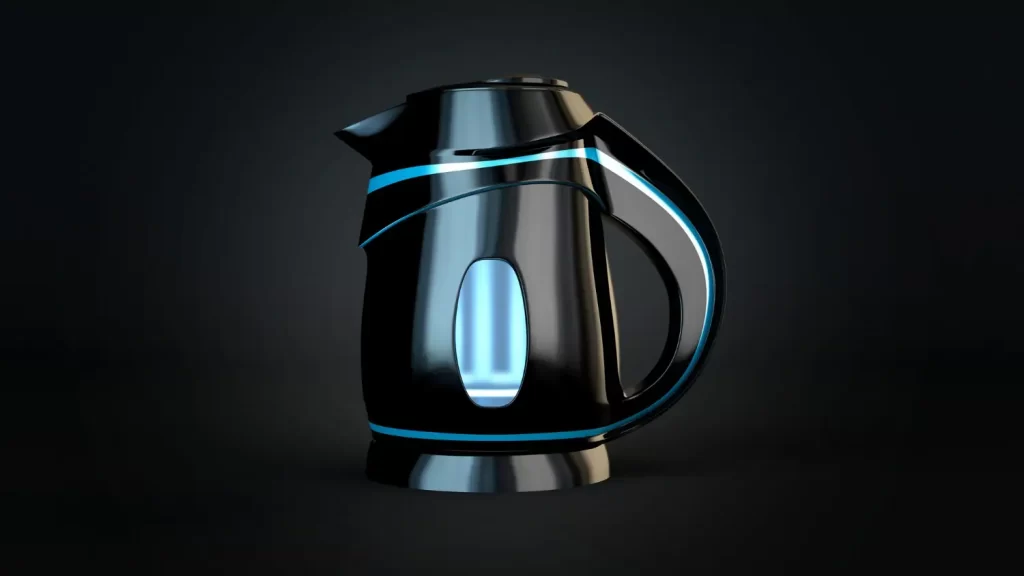
It was decorative and made of bronze, as you could expect. The first electric kettle is created many years later by the Carpenter Electric Company.
45. World Wide Web:
The terms “Internet” and “World Wide Web” are not synonymous, even though most people frequently use them that way. The World Wide Web refers to users accessing data online via webpages and hyperlinks. Despite taking up a sizable chunk of the Internet, it is only a tiny portion. Soon after Tim Berners-Lee created the World Wide Web in 1990, the Internet made a significant step toward being widely known. Before the public realized the Internet’s potential, it took about 30 years.
46. Pacemaker:
The pacemaker’s success has been attributed to many people. Albert Hyman created the artificial pacemaker in 1932, one of the first designs. He tested it on animals, but he never made the results of human trials public due in part to concerns that he was using it to “revive the dead.” Arne Larsson was the first to get a Rune Elmqvist-designed implanted pacemaker in 1958.
47. Refrigerator:
A refrigerator, also known as a “fridge,” is a household or business appliance with a thermally stable chamber and a heating system (mechanical, electronic, or chemical) that moves heat from inside to outside the device to cool the interior down below room temperature. Around the world, refrigeration is a required method of food preservation.
48. Kidney Dialysis machine:
Dr. Willem Kollf created the kidney dialysis system and was the surgeon who successfully implanted the first mechanical heart into a human. The engine wasn’t handy initially, but he kept working on it and eventually managed to save many lives.
49. Apple iPhone:
Even if it is not the first smartphone, it is undoubtedly the most endearing for various reasons. Android is the most significant rival in operating systems, and no one is sure which one arrived first. What is known is that the H.T.C. Dream, the first genuinely Android-powered gadget, was out almost a full year after the first iPhone hit the market.
50. Vaccum cleaner:
Hubert Cecil Booth and David T. Kenney created the first stationary-powered vacuum cleaner with a suction mechanism in 1901. Walter Griffiths created a portable, home-grade vacuum four years later. Even middle-class people still viewed the appliance as a luxury until after World War II. Indeed, as technology and development advanced, the appliance became less expensive.
51. Bicycle:
The first significant advancement was accomplished by Karl von Drais. In 1817 first introduced a steerable, two-wheeled machine. This early creation, also known as the “velocipede,” “hobby-horse,” “draisine,” and “running machine,” has earned Drais widespread recognition as the creator of the bicycle.
52. L.E.D.:
The L.E.D. was created in 1927 by Oleg Vladimirovich Losev, but he was the only one who could see any practical applications. He applied for a patent for his creation, which he named Light Relay. In 1962, Nick Holonyak of General Electric was credited with developing the first usable visible-spectrum L.E.D. The efficiency of L.E.D.s has increased ever since.
53. CD Player:
Even though the CD was created in 1966, the first CD player was available in 1982 and cost more than $1,000 per unit. Over 400,000 players were sold between 1983 and 1984 despite the high price. In 1979, Sony and Philips worked to standardize the format so that anyone could buy any CD or player from any manufacturer without encountering compatibility concerns.
54. Compass:
Global positioning systems and satellites have replaced magnetic compasses as the primary navigational tools. Still, their historical significance will never be forgotten, particularly in land and marine exploration. Between 300 and 200 BCearly compasses were created in China. They were using lodestone, a naturally magnetic mineral.
55. Paper currency:
Trade was the commercial exchange of products and services before money existed. Over history, the current agency has taken various forms, including coins, food, produce, cattle, and almost anything else that could be traded for other goods. Once more, paper money was first used in China in the ninth century, and Europe soon followed in the late sixteen hundreds.
56. Antibiotics:
Although Joseph Lister and Louis Pasteur initiated the war against bacteria, Alexander Fleming, in 1928, through the unintentional discovery of the bacteria-inhibiting mold known as penicillin, gave the medical community a decisive advantage in the conflict. Throughout the 20th century, penicillin was widely utilized and proven to advance antibiotics significantly.
57. Alphabet:
Ancient Egyptians, Greeks, Romans, Hebrews, and even the ancient Chinese all contributed to the development of the alphabet over hundreds of years.
58. Soap:
In 3000 B.C.E., Northern Scotland invented the first indoor toilet. Around this time, the ancient Mesopotamians began understanding the value of hygiene in preserving good health and developed the concept of washing soap produced from animal fat and wood ash.
59. Calculus:
Calculus adopts the opposite stance from the “infinitely large” point of view. Calculus has dramatically improved the world’s understanding of differential equations and optimization. It allows us to find the best potential answer to a current situation and to improve our modeling techniques for change.
60. Eraser:
The eraser is a great idea or notion. The delete button, white tape, black tape, and the more literal rubber eraser are just a few examples of the many shapes it can take. Thanks to this straightforward action, you can change names, make constitutional amendments, fix faulty measurements, adjust a structure, or update an existing order.

The basis of scientific methodology, improved laws, developing cultures, and even the potential to rewrite history are all built on the capacity to go back and remedy prior errors.
61. Mirror:
Before mirrors were manufactured in large quantities and used extensively, people could only see their reflections on still water or extremely dazzling metallic surfaces. Of course, the texture and illumination were uneven, so what they could see did not accurately represent their accurate reflections. That was altered by the mirror, which was created during the Renaissance. One mirror may reveal exactly how you appear to others, which encourages us to acquire etiquette regarding eating, grooming, shaving, and acting in public.
62. A.T.M.:
According to legend, the first fully functional A.T.M. was created by John Shepherd Barron. On June 27, 1967, Barclays Bank’s first A.T.M. was set up in Enfield Town, London. £10 was the maximum withdrawal amount permitted. Currently, in any modern community, the machine is always around.
63. D.N.A. Printing:
A method to examine human D.N.A. sequences that require roughly three billion units was developed in 1984 by molecular researcher Alec Jeffreys. To achieve this, he only compared the sequence portion that showed the most variation between individuals. In a forensic inquiry, notably a case in Narborough, Leicestershire, D.N.A. fingerprinting was used for one of the first significant times. Without it, the police would have made a mistaken accusation in the rape-murder case involving Lynda Mann and Dawn Ashworth.
64. the Light bulb:
Thomas Edison supposedly invented the light bulb. He wasn’t the only one to contribute to the advancement of technology. Edison created a cheap, helpful light bulb to stay one step ahead of his rivals. Even after he applied for his invention’s patent in 1879, several others contributed to its improvement, especially concerning filament materials. Because carbonized bamboo could burn for more than 1,200 hours, Edison discovered it was the perfect filament. It is one of the milestone discoveries of 101 inventions that changed the world.
65. Flashlight:
A switch-connected electric lamp makes up the fundamental component of a flashlight. A British inventor named David Misell received the first flashlight U.S. patent in 1899. The New York City police received some of the first flashlights as a donation. Early versions of the light flashed repeatedly rather than continuously since they were ineffective and required a brief “rest” to be operational, hence the name.
66. X-Ray:
Wilhelm Conrad Rontgen claimed sole credit when the x-ray was discovered in 1895. His experiments found that cathode rays could pass through human flesh in addition to GlassGlass. The discovery of something unidentified, ergo the x-ray, must have been amazing. To locate shattered bones and bullets inside, a patient’s technique was initially used practically during the Balkan War.
67. Battery:
With batteries, life is quite the same, and batteries’ history may be considerably older than you believe. The earliest known batteries date back perhaps 2000 years.
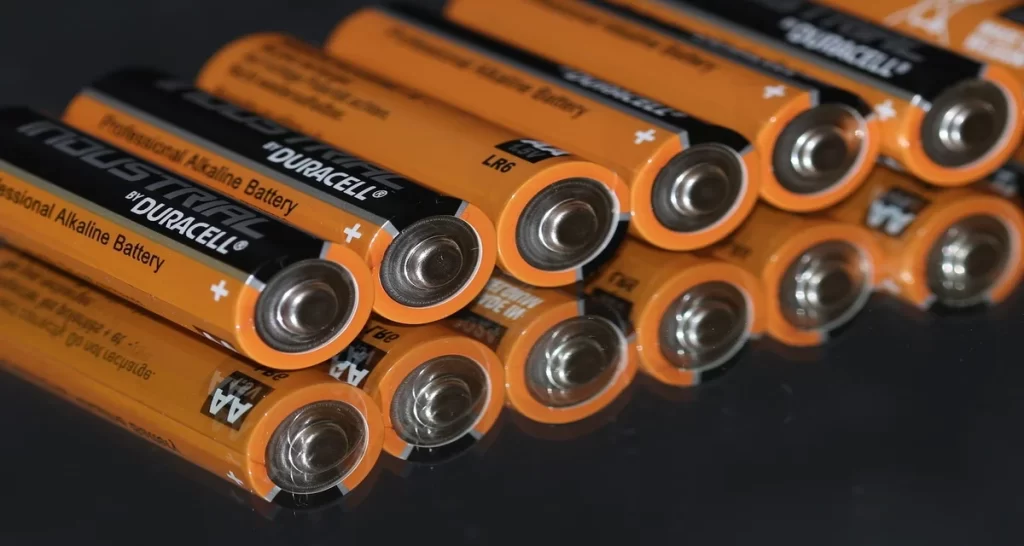
The ancient Parthians placed an iron rod encircled by a copper cylinder within clay jars filled with vinegar solution. It is assumed that they applied it to silver electroplating.
68. Toothbrush:
The chew stick was the first type of toothbrush ever discovered. Many people used it to try to remove anything grimy from their teeth. It was composed of bare twigs with frayed ends. William Addis, an Englishman, was jailed in 1770 for starting a disturbance.
69. Steam Iron:
In 1882, Henry W. Seely submitted a patent application for an electric iron. At the time, it was known as an electric flatiron. By preventing shirts and pants from wrinkling, people suddenly had a more straightforward way to maintain their wardrobes and look good in more consistent patterns.
70. Microscope:
Humans could not perceive anything smaller than a grain of sand for thousands of years. When the microscope was invented in 1950, everything was different. Look closely at tiny objects like food particles, germs, and other creatures.
71. Stapler:
It was created by royalty but is now an everyday office supply. For King Louis XV, the first stapler was built in France in the 18th century. The movie Office Space contributed to the popularity of the modern stapler we use today, which has a top opening for simple refilling.
72. Fire Extinguisher:
The operator of the fire extinguisher posed a greater risk in the early models than the fire itself. It was built up of a chamber for gunpowder made of pewter and a liquid-filled cask. By lighting the fuse, the entire apparatus was set into motion.
73. M.R.I.:
Although everyone agrees that the M.R.I. is a fantastic invention—doctors, scientists, patients, and laypeople alike—we still don’t know who came up with it. On the one hand, many people consider it to be Raymond Damadian because, in 1973, when he employed the device to distinguish between healthy and diseased tissues, he established the stage for its eventual usage as medical equipment.
74. Industrial Robot:
George Devol’s Unimate, the first industrial robot, was set up in a General Motors assembly line in Ewing Township, New Jersey.
75. Electric motor:
The electric motor has made domestic chores worldwide more time-effective. The steam engine may have sparked the Industrial Revolution. Using electricity to push a device, as seen in kitchen appliances and power tools, is essential here rather than any specific kind of electrical gadget.
76. Concrete: A
round 6500 B.C.E., the first concrete-like structures appeared in parts of southern Syria and northern Jordan. Concrete is the most commonly used synthetic material composed of coarse composite combined with fluid cement.
77. Anesthesia:
Imagine undergoing surgery without receiving anesthetic beforehand, either on yourself or another person. Simply put, anesthetic medications put your body and mind to sleep or render some body parts sufficiently numb that you don’t feel anything when they are being treated.
78. Pasteurization:
Although it may seem clear now, no one fully recognized in the 1800s that germs or microbes could infiltrate living hosts like humans or animals. We soon realized that germs were living creatures that could be found anywhere, including in the air we breathe.
79. Printing press:
The dissemination of information and historical documents accelerated dramatically due to Johannes Gutenberg. He changed note-taking from handwritten to printed in 1439, revolutionizing it.
80. Nail:
Without nails, human civilization would fall apart, much like a structure. Before the invention of these metal fasteners, timber constructions were constructed by individually fastening each component to another through laborious mathematical effort. Ancient Egyptians have been using nails since about 3400 B.C.E.
81. Calendar:
Timekeeping is thought to have been practiced as early as the Neolithic period, but calendars were invented in the Bronze Age, about 3100 BC. The first calendar was created by the Sumerians in Mesopotamia, who divided the year into 12 lunar months with a length of 29 or 30 days each.
82. 3D painters:
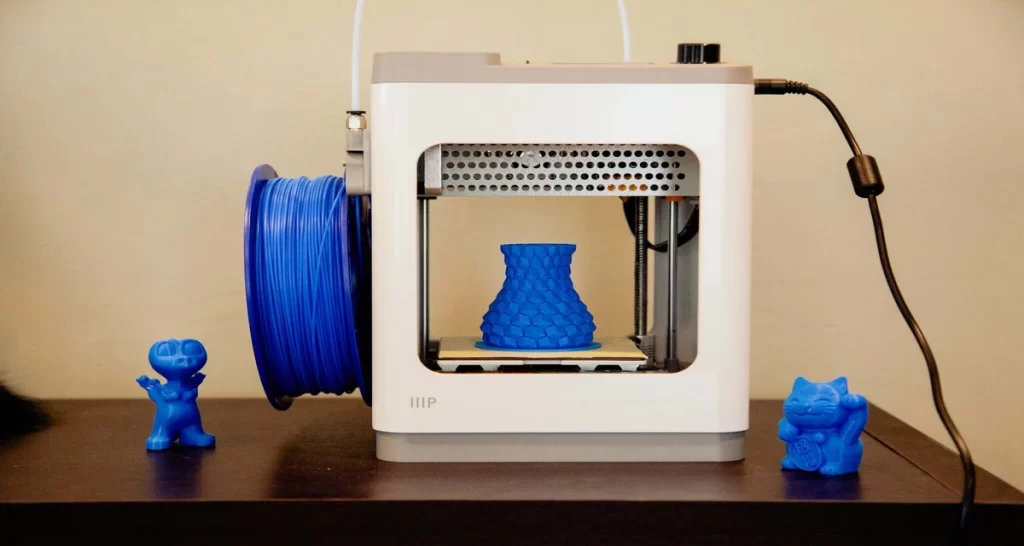
One of the greatest inventions of the twenty-first century is the 3D printer, which enables you to turn your concepts into tangible things.
83. Alloys:
An alloy combines two or more elements to create a metallic solid. Maximum two or more pure or semi-pure substances that have become impure. The impurities added to the desired properties of the alloy.
84. Robert:
Depending on your perspective, A.I. may be the best or worst innovation ever created by man. The future of artificial intelligence would, at its best, show robots, drones, and other machines working for us to make daily tasks more straightforward and more effective, or, as in movies, consuming the entire human race and replacing the labor force, resulting in unemployment, depression, and general laziness.
85. Biometric scanner:
Using biometrics, you can become an identification card—no need for P.I.N.s, I.D.s, passwords, etc. Only you are necessary. Conventional access control systems are being replaced by feature-based authentication, which grants access based on powerful proximity rather than tokens and other knowledge-based mechanisms.
86. Bluetooth:
In 1994, Ericsson invented Bluetooth, a wireless technology that replaces data cables by allowing data to be sent over short distances using short-wavelength radio transmission. An anglicized form of the Danish monarch Harald’s nickname Blatand, who brought several Danish tribes into a single realm in the 10th century, is known by the name “Bluetooth.”
87. Capacitor:
An electronic component that can hold a charge is a capacitor. It’s one of the most fundamental components used in electronics. Its creation was a result of a discovery. German physicist Ewald Georg von Kleist found in 1745 that a hand-held jar could store charge after being severed from a high-voltage electrostatic generator. It wasn’t until much later that it became clear how the glass jar with the metal film on the inside and outside functioned as a capacitor after being charged.
88. Electric guitar:
The guitar seen here was the original design of the beloved electric guitar and was known as the Frying Pan, perhaps because of its shape. It was the outcome of George Beauchamp’s (together with Adolph Rickenbacker’s) painstaking efforts to create a louder, better guitar. In his futile attempts, he even tried mounting a Victrola horn—the horns you see on vintage record players—on the bottom of the guitar and aiming it at the audience.
89. Elevator:
The development of elevators is most likely the primary global contributor to obesity. For as long as we can remember, these devices, sometimes known as lifts, have been used to “lift” people, products, and any other tangible object between floors or levels of a building.

Early elevators were powered by people, animals, or waterwheels. England started using steam-powered elevators in the early 19th century. Later, these were replaced by hydraulic elevators. If you want to add comfort to the list of 101 inventions that changed the world, this is it.
90. Fibre Optics:
When the target medium is less dense than the source medium, and the approach angle exceeds the critical angle for total internal reflection, light bounces back off the boundaries of the medium. That is senior high physics.
91. Flash memory:
Our collection of data is expanding at a startling rate. It must be kept somewhere portable and secure. Devices using flash memory accomplish this.
92. Hard drive:
The first hard drive, a standard data storage device, was developed by I.B.M. in 1956 and consisted of 50 24-inch discs housed in a cabinet the size of a cupboard. The machine could only be leased for $3,200 a month and had a ridiculous capacity of 5 M.B.
93.HTML:
On the World Wide Web, documents are produced using it. HTML was created in 1990, mainly by Tim Berners-Lee, with help from his CERN coworkers. A web page is built using HTML to be displayed in a web browser.
94. Keyboard:
The teleprinter and keypunches are the devices from which the modern keyboard descended. The keyboard was the leading and most integrated computer peripheral from the late 1940s until the mouse became widely used in the 1980s.
95. Laser:
The term “Laser” refers to a device that produces light by stimulating the emission of radiation. In addition to playing a crucial part in Darth Vader, Star Trek, and countless other science fiction films, lasers may be found in a dizzying array of products, including CD players, dentistry drills, and eye surgical tools.
96. Lenses:
An optical device known as a lens refracts light beams to cause them to either converge or diverge. GlassGlass or plastic is frequently used to make lenses. Another type of lens does not cause light to be refracted.
97. Microprocessor:
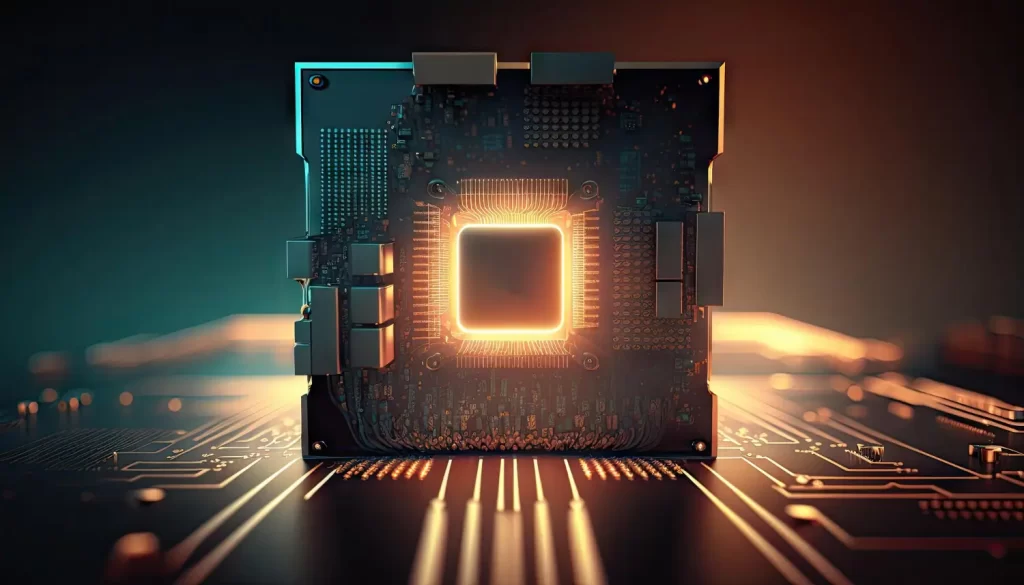
In 1971, Intel introduced the Intel 4004, a 60-dollar single-chip computer. It had over 2300 (Metal Oxide Semiconductor) transistors inside of a three-by-4-millimeter chip. Despite being so small, it had the same amount of power as the ENIAC, which had 18,000 vacuum tubes filling 3,000 cubic feet of space.
98. Mouse:
The mouse has evolved to define a large portion of how we use computers, yet we frequently use it without ever giving it a second thought.
99. Periodic table:
Not Dimitri Mendeleev, but Alexandre-Emile Béguyer de Chancourtois, who we will refer to as Al from here on, created the first periodic table in 1862. All of the hatred in the classroom was directed at the wrong individual.
100. Plastic:
Plastic is one of the most significant technologies ever, even though groups working to protect the environment might disagree. It is described as “any of a broad spectrum of synthetic or semi-synthetic organic solids that are moldable” by Wikipedia. Although they may incorporate additional materials, plastics are typically high-molecular-mass organic polymers.
101.Telescope:
We shall always be plagued by the enigma of what is beyond our field of vision. The telescope, however, is the discovery that has helped put everything in perspective, including the vastness of our planet and the space around it, as well as our place and function as a species in the cosmos.
Final Thoughts on The Inventions That Changed the World:
These 101 technologies from the nineteenth century significantly impacted how people lived. Many of us find it difficult to picture life without such changes since they are so significant and long-lasting. Many technologies alter how people live their lives, which is what they do.
Let’s hope these adjustments are beneficial. As new issues emerge and solutions are developed, contemporary lives will continue to change. It can be challenging to imagine living before modern conveniences like calendars and microwaves. Scientists are still working on inventing stuff more that the list mentioned here at 101 Inventions that Changed the World. That much is certain. Future breakthroughs and challenges still need to be solved.
